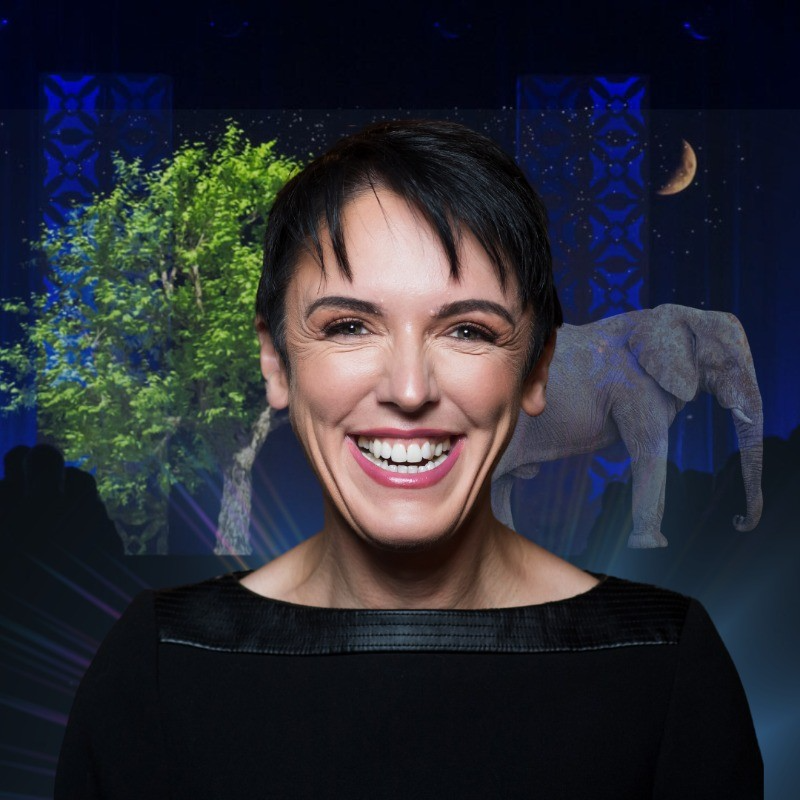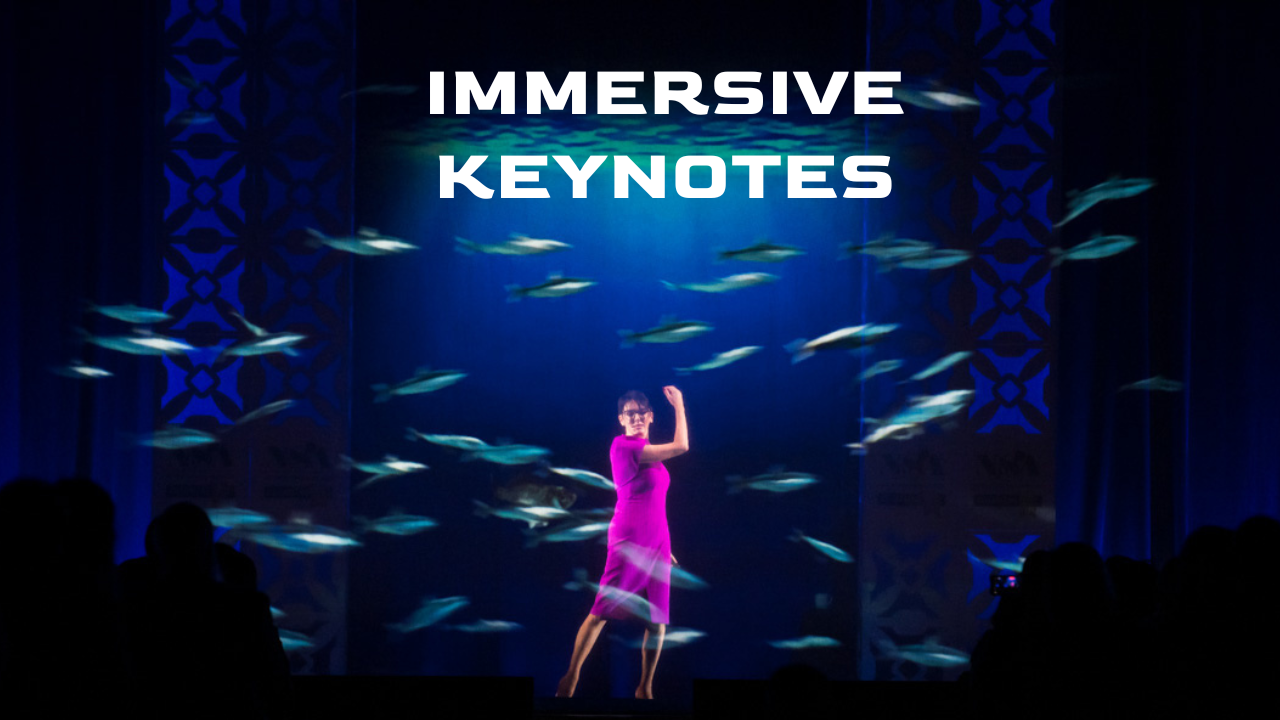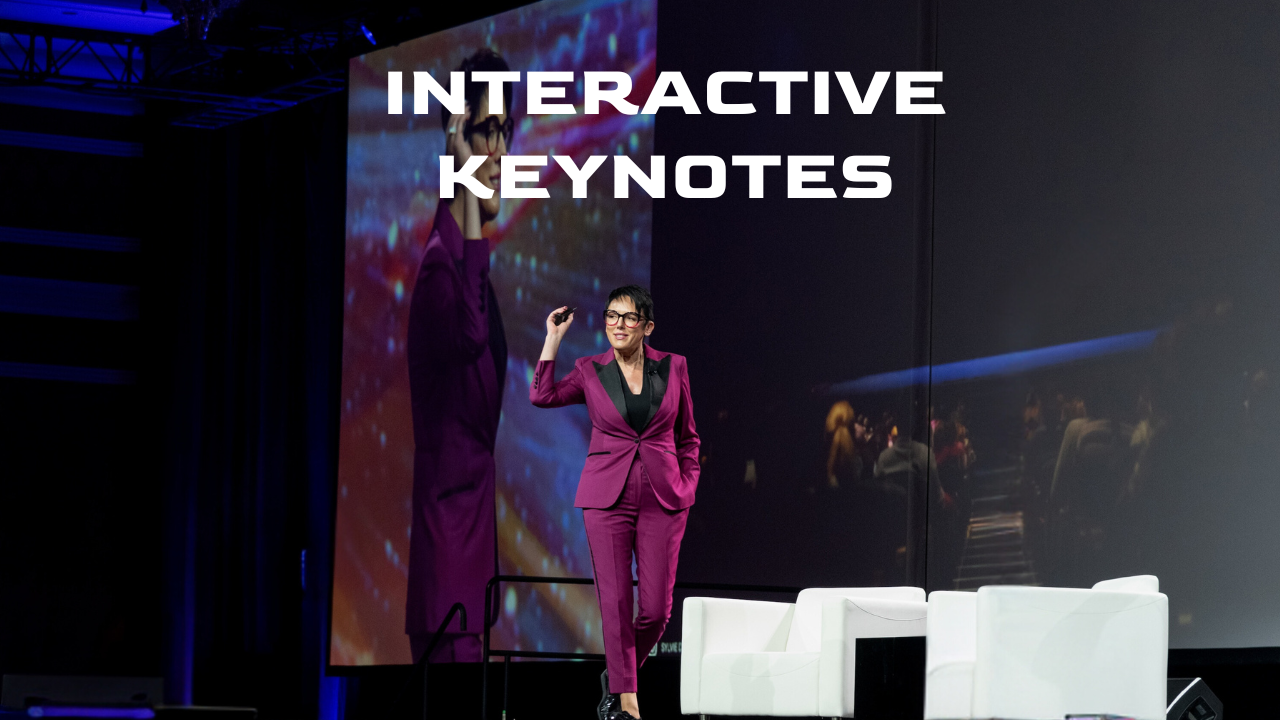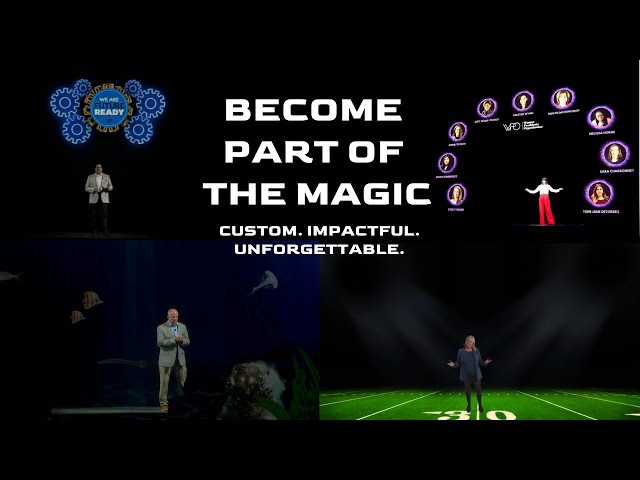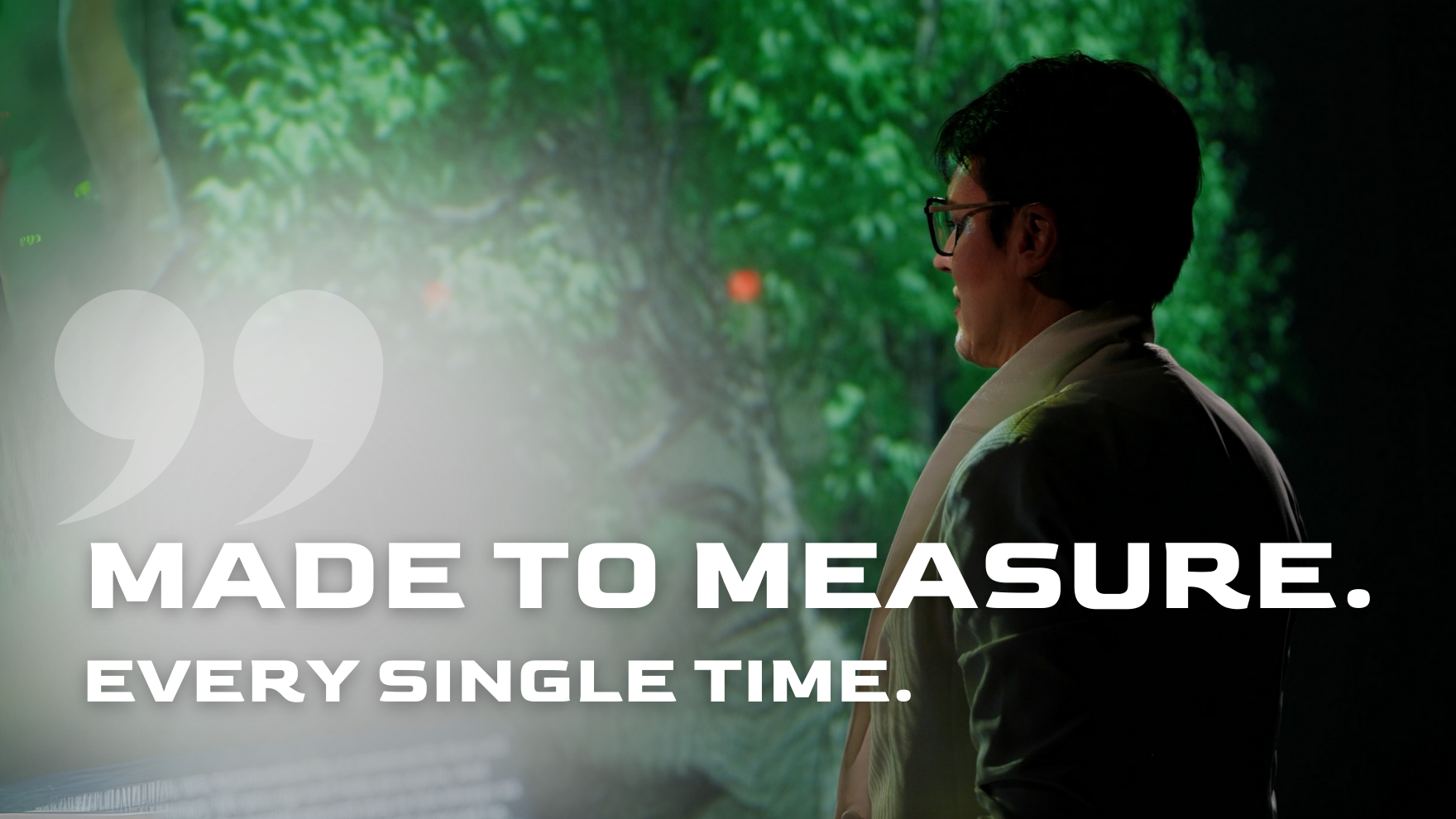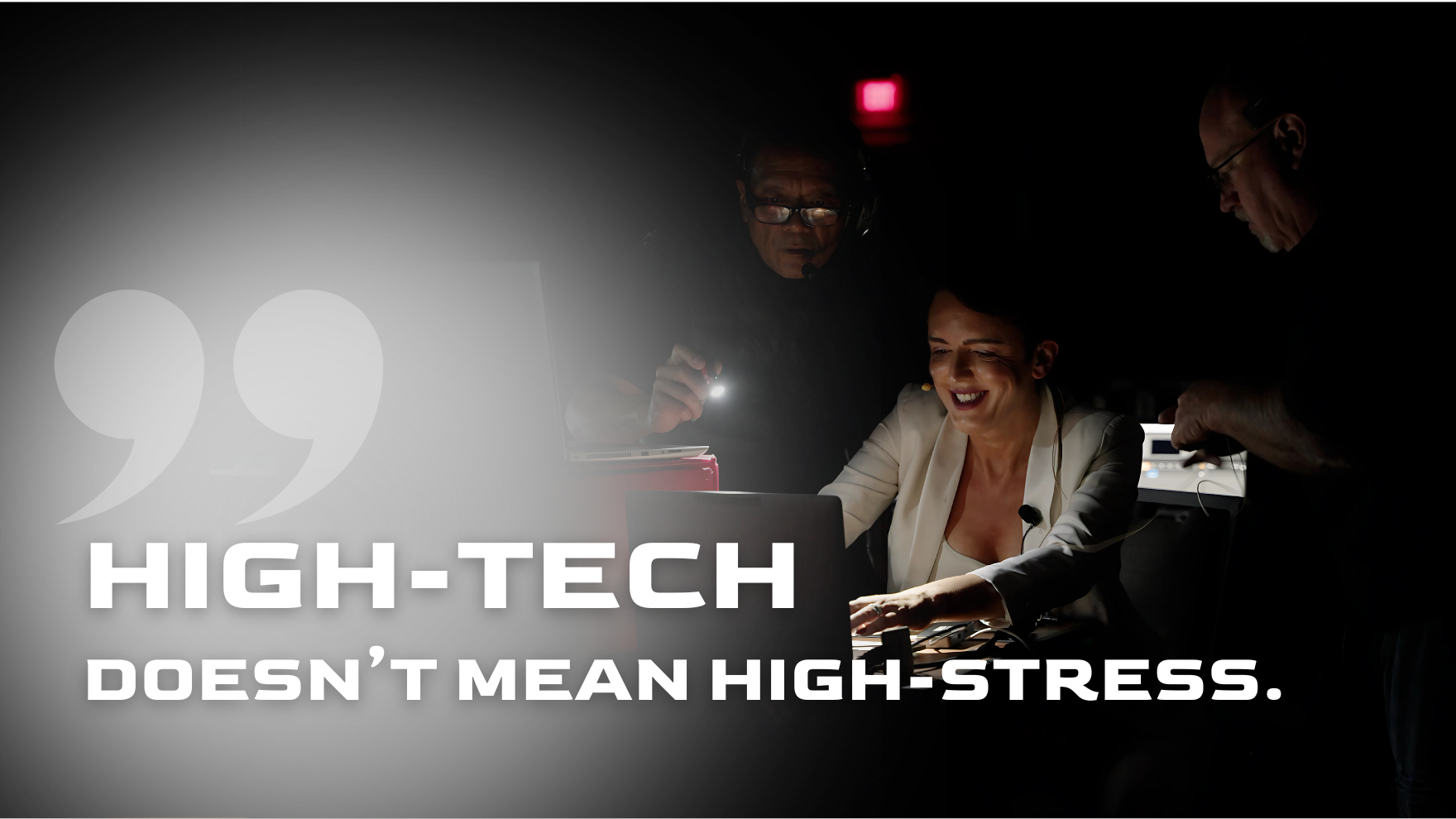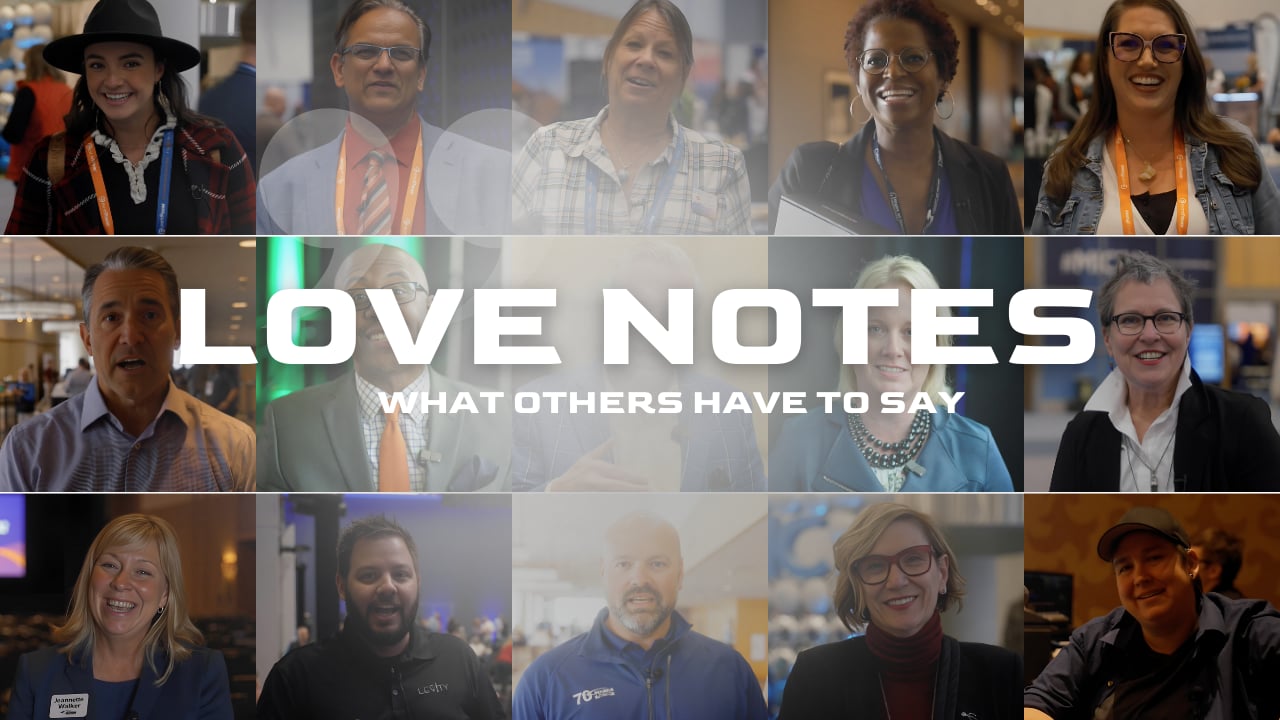What I learned about the Craft of Speaking from the Best Motivational Speaker in the World
Some blog posts start with a hook. This one starts with a story and a confession.
When I attended my very first NSA Influence conference in 2015 as a member, I was a total newcomer… but I was already totally in. I wanted to be involved. To learn. To serve. So I did what every overly eager overachiever does when they want to understand something from the inside out: I volunteered. Backstage, to be specific. I signed up to help in the green room, where the mainstage speakers prepared for their time on the platform. My job was simple: help them feel calm, organized, and focused. Keep the energy high and the distractions low.
That’s when I noticed one speaker in particular. It was the final day of the conference. Most folks in the audience were starting to think about their flights, their suitcases, their catch-up emails. But this man? He was laser-focused. Rehearsing his lines. Running through transitions. Tweaking the timing. Practicing again. And again. And again. I watched him consult with his wife. I watched him pace with intention. I watched him close his eyes and mouth the words silently. I watched him practice gestures and plan his steps to the side, the intentional physical movements he would take on stage as part of the delivery.
But not without judgment. Because, admittedly, I thought to myself, “Poor guy.” He must be new. This is probably his first time on a big stage. He must be terrified. I even wondered how NSA could let such a newcomer close out such a prestigious conference. I had no idea who he was. And clearly, I had no idea what I was about to witness.
So I made a decision. I was going to sit in that audience, front of house, and watch this presenter deliver what I assumed would be a heartfelt, humble attempt at a closing keynote. And instead, I witnessed what would become the single greatest keynote I have ever seen in my life. Here’s a little taste for you:
The closing keynote speaker was Hall of Fame Speaker Mark Scharenbroich, CSP, CPAE. From the moment he stepped on this stage, the room changed, the temperature changed… and I changed, forever. That keynote wasn’t just the best I’d seen. It became my best. My benchmark. My standard. My mirror and my motivator. The one I’d measure myself against with every single presentation I’d give from that day forward.
I’ve watched it dozens of times since then. And in fact, it’s become my New Year’s tradition. Every January 1st, I pour a cup of coffee, sit down with a fresh journal, and watch “Nice Bike” again. Because every time, I hear something I haven’t heard before. Every time, I notice a pause, a gesture, a moment of connection that teaches me something new about the craft. So, today, I’m sharing some of the lessons I’ve learned from Mark throughout the past decade with you. Lessons about stagecraft, connection, humility, and what it really means to show up for your audience and client.
Key Takeaways
- Preparation is a sign of respect and your license to improvise with confidence.
- True customization transforms your audience and you, every single time.
- The best motivational speaker in the world knows every word, pause, and gesture must be earned.
- Intentional stagecraft turns a keynote into a multisensory experience.
- The best motivational speakers in the world use humor to unite, never to divide.
- Feedback is a gift when it comes from those who know your essence and want you to grow.
- Ethics aren’t the grand gestures; they’re the small, everyday choices that define us.
- Legacy isn’t built in one speech. It’s built one speech at a time.
- If your foundation at home is fractured, your presence on stage will be too.
- Being introduced by your role model isn’t the final chapter; it’s the beginning of a new one.
Lesson 1: Preparation Is a Sign of Respect and It Grants You Permission to Improvise
Mark’s keynotes don’t look or feel rehearsed. They look and feel effortless. Fluid. Natural. But I’ve seen the effort firsthand, and quite frankly, only the tip of the iceberg of his preparation process: the pacing backstage, the practiced lines, the notes, the run-throughs. Imagine, if a master of his level is still rehearsing until the very last moments before walking on stage, how many hours, days, and weeks must have gone into preparing beforehand? From scripting every nuance to visualizing stage movement to refining every transition, the amount of unseen labor is staggering.
That’s when I realized something: first and foremost, it’s his respect for each audience, each client, each stage he graces. However, it’s also that true preparation doesn’t make him rigid. It makes him free. Mark is able to respond to the audience, to add spontaneous moments, to shift energy, because his structure is so solid. He isn’t guessing. He isn’t winging it. He isn’t playing. Because the only way to play at that level is to put in the reps beforehand.
You see, I have to admit that at that time in my career, I didn’t rehearse anymore. I thought, “I’ve got this.” After all, I had memorized most of my script. But not only did Mark make me realize the disrespect I showed towards the stage I presented on (which was never mine in the first place), but also towards myself. How I limit myself in my capabilities. Since ever then, I prepare and rehearse not to memorize, but to liberate. E.v.e.r.y single time. No matter if I’m in front of five or five thousand audience members.
The more grounded I am in my material, the more present I can be with the people in front of me.
Lesson 2: Customization Is a Love Letter and an Unexpected Gift You Receive Back
When Mark steps on stage, it never feels like he’s delivering his keynote. It feels like he’s delivering yours. He doesn’t just add a company name or mention a CEO. He immerses himself in the world of the audience. Their language. Their stories. Their values. And it feels as if he built something just for them, because it was. It’s not personalization. It’s devotion.
Watching Mark customize his content is like watching someone write a love letter. He does it with care. With respect. With reverence. And the audience always knows, feels, and appreciates it. They don’t just hear his message; they feel seen by it.
That’s why I stopped “tweaking” my slides before events. Yes, I admit, I’ve been one of those speakers who used their flight from the east to the west coast to quickly run through my slides, change the order, add some logos, think about a few names and terms to sprinkle in, and then called it “customization.”
Now, I reimagine the entire experience. Because when you love your audience, you build something beautiful for them. And it came with an unexpected gift. I realized that one day, I learned how medication is delivered to pharmacies within hours, even in the most remote areas, while the next day, I discovered the inner workings of global luxury hospitality. One day, I could understand how artificial intelligence is transforming insurance companies, while the next, I dove into the psychology of real estate decision-making. As Speakers, we receive a backstage pass into industries, professions, and processes that few ever witness up close. I don’t know of any other profession that offers this kind of privileged access, and it all begins with true customization.
Customization isn’t a courtesy; it’s the foundation of trust that every keynote must be built on.
Lesson 3: Every Single Word Must Earn and Deserve Its Place
Mark doesn’t waste words. Every word and every sentence he delivers has purpose. No filler. No fluff. Every phrase carries intention, and when you listen closely, you realize that even his transitions, even his pauses, are doing heavy lifting.
Watching Mark speak is like listening to a finely tuned instrument. His word choices are sharp, his timing impeccable. You don’t get the sense that anything is improvised or thrown in for effect. Each word has a job to do, and it does it well.
His keynotes are sculpted. Every syllable carries responsibility. Every line must justify its presence. There are no extras. Just respect for language, message, and audience. This level of precision doesn’t just elevate a speech, it defines it.
Clearly, I struggled with this… and still do. If Mark were the one writing this blog post, it would be concise, intentional, and on point. Meanwhile, I’m about to release 4,000 words your way. And the same is true in my keynotes: I often feel the need to say everything, repeatedly, just to make my point. And then once more, just in a different way.
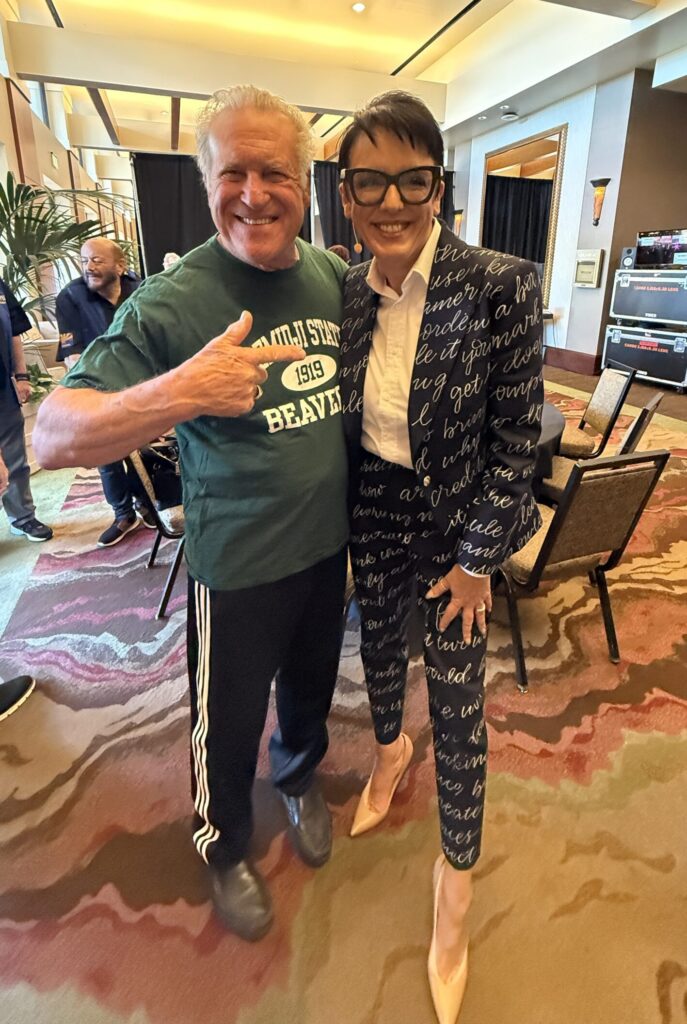
However watching Mark reminds me that mastery is not about volume, it’s about precision, purpose, and restraint. He taught me to become ruthless with my own scripts. To question every sentence. To ask: Does this serve the audience? Does this move the story forward? Does this deepen the message?
There’s a discipline to that kind of clarity. A respect for language. And a trust that the audience deserves your most thoughtful communication.
Every word in your keynote is a contract with your audience’s attention.
Lesson 4: The Unspoken Artistry of Stagecraft
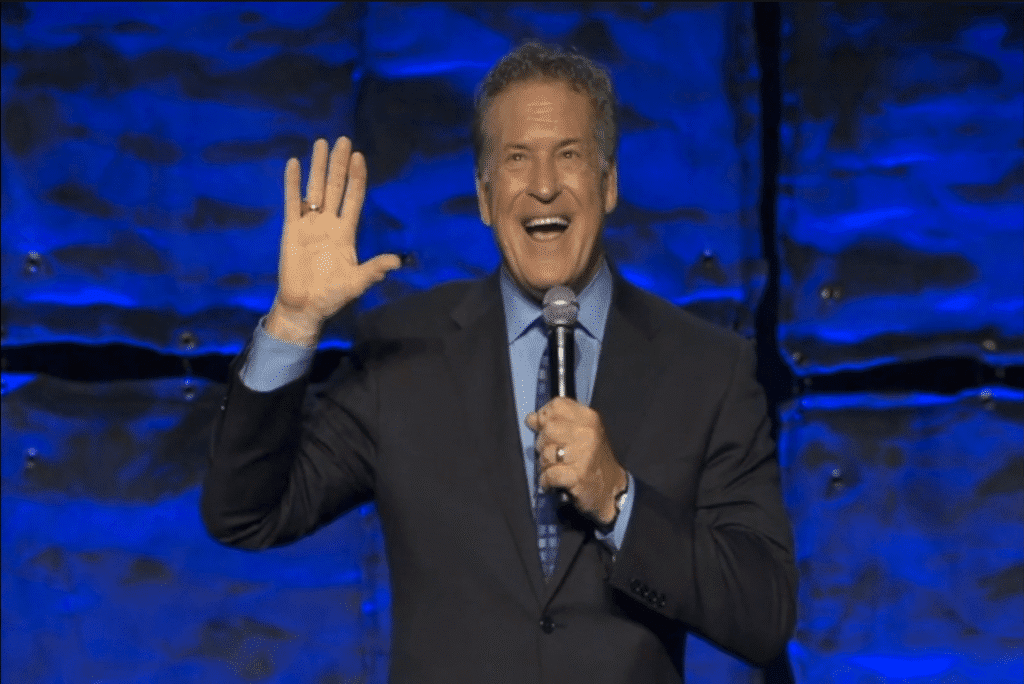
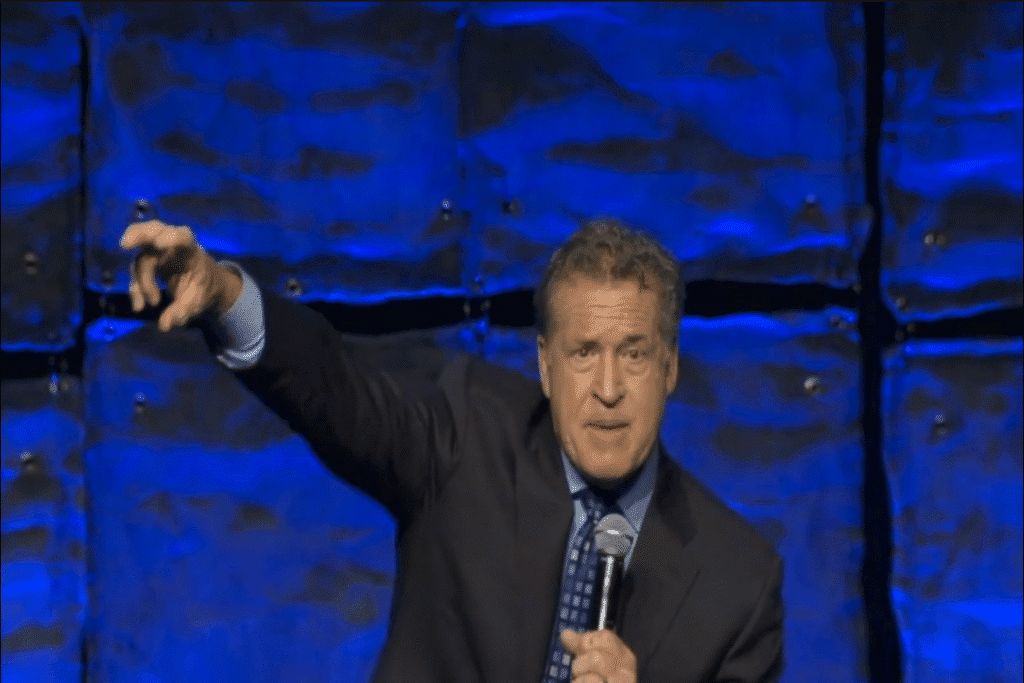
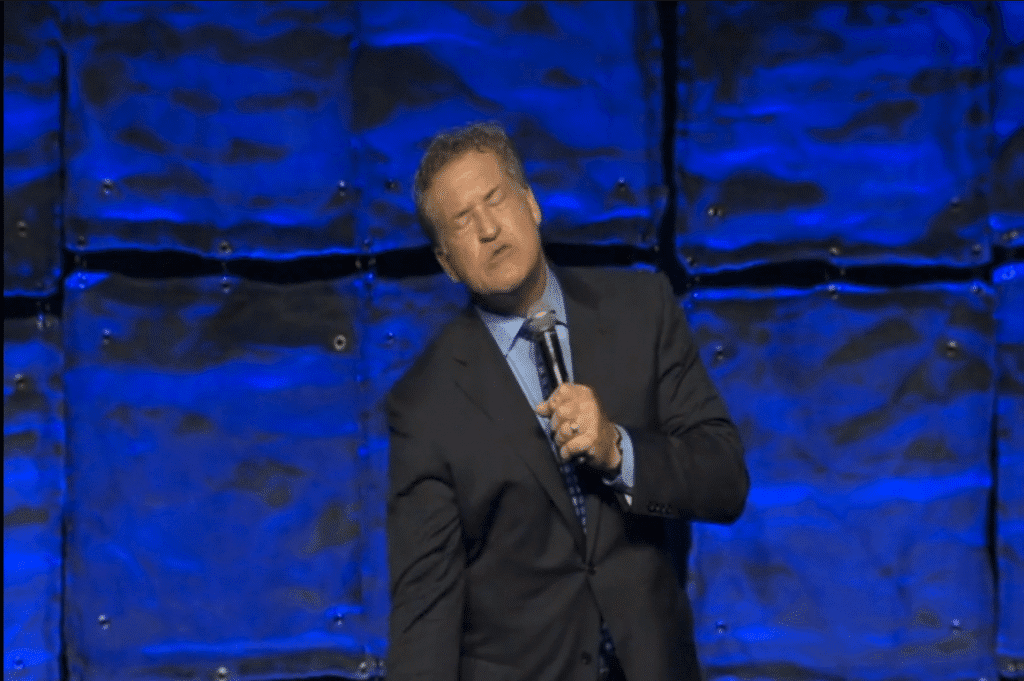
Mark doesn’t just perform on stage. He constructs. He builds moments, layers them with intention, and then reveals them like an artist stepping back from the canvas. Every gesture has purpose. Every step adds tension. Every movement lands exactly where it should.
He uses a handheld microphone. He incorporates subtle props. He understands framing, angles, lighting. His presence is architectural, and that’s why it’s unforgettable.
When I watch Mark’s “Nice Bike” keynote each New Year’s Day, since a while I started to watch it twice: once with sound, and once without. And it’s remarkable to me how his gestures, facial expressions, body language, and every movement are choreographed with such precision and purpose. I can’t hear a word, yet I still know exactly what’s happening. That’s the level of intentionality he brings; not just in what he says, but in how he says it.
As speakers, we often talk about “owning the stage.” But Mark taught me it’s more than ownership with our words. It’s curation. You’re building an environment for emotional resonance. You’re engineering an experience. I now think beyond what I want to say, and focus on how the environment I create can help the message land. My movements, my gestures, my smile, they all have to become part of the experience I construct intentionally, not just habits I repeat unconsciously.
If your gestures, expressions, and movements aren’t intentional, they’re accidental. And if they’re accidental, they’re probably distracting.
Lesson 5: Pauses Are Never Empty
We’ve all heard the phrase “The Power of the Pause.” It’s Toastmasters 101. But what we don’t learn is how to use that pause effectively, how to let it work for you, and lift the message. Watching Mark over and over again taught me how meticulously and intentionally he uses even the space between the words. Every pause in his keynote is deliberate. And none of them is ever empty.
When Mark pauses, something happens. He doesn’t just freeze. He doesn’t go limp. He steps, he shifts, he gestures. A raised eyebrow. A smirk. He clears his throat, intentionally. He lifts his chin ever so slightly. He scans the room with intent. He shifts his weight to one foot. He raises a hand slowly, only to let it hover. He pivots subtly, like he’s setting up the next moment.
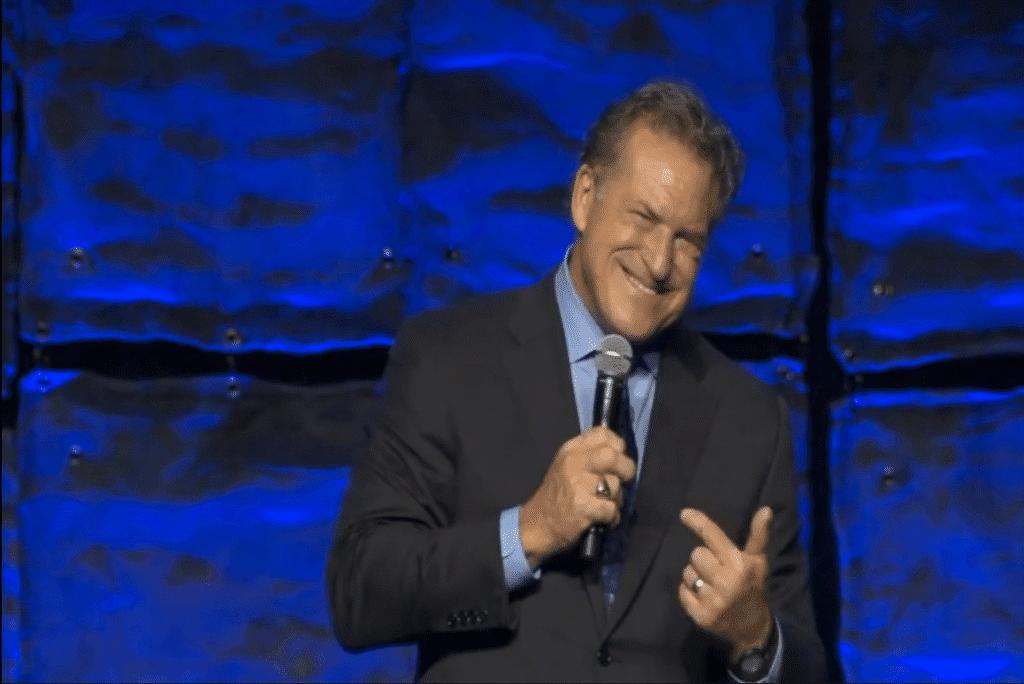
He lets his eyes connect with someone in the second row. He pretends to search the air for the right word. He adjusts the microphone cord deliberately. He touches his temple thoughtfully, as if weighing the next thought. His entire body is engaged, even in stillness. It is like watching a dance between silence and movement.
It taught me something so profound: pauses aren’t breaks. They’re beats. Yes, they’re opportunities for the audience to catch up, to lean in, to feel the message land. They create anticipation. They deepen impact. But they are also opportunities for me to breathe more life into the message and to pause not just for effect, but to serve the story. These pauses aren’t passive; they are scripted moments of engagement and bridges, even if they don’t appear on any slide or manuscript.
If you’re not using your pauses intentionally, you’re missing half the conversation.
Lesson 6: Humor Should Elevate, Not Diminish
Mark uses humor not as a weapon, not as a crutch, but as a bridge. His jokes never came at anyone’s expense. Not the audience. Not other speakers. Not entire groups of people. Instead, his humor is gentle, self-deprecating, and universally relatable. He plays with stereotypes in a way that makes you feel seen but never targeted. His humor makes you feel included, respected, and safe, as if he’s laughing with you and not at you. It builds trust, rather than tension, in the room. His approach proves that comedy can be courageous without being cruel and that it takes incredible finesse and emotional intelligence to craft humor that unites rather than divides.
He also wields humor with surgical precision, inserting it at the most unexpected yet impactful moments. He possesses an incredible skill that I call “changing the temperature.” One moment, you find yourself tearing up over one of his stories, feeling angry, agitated, or heartbroken. And just as you’re sinking into that moment, he lifts you with a perfectly timed, surprising burst of humor that shifts the energy in the room. A masterful release! The contrast not only amplifies the emotional experience but also gives people permission to breathe, reset, and reflect.
As speakers, we’re taught that humor is a powerful tool. But Mark reminds me that it’s also a responsibility of the what, how, and when. Because when you’re entrusted with a microphone, your words matter more than you realize. So when you use humor, make sure it’s never punching down. Make sure it leaves people feeling lighter, not heavier. Because the best motivational speakers in the world know that laughter should never come at the cost of someone’s dignity. And that humor doesn’t require a target, it requires a mirror. And the more honestly we hold it up, the more people can laugh with us, rather than at someone else.
If your audience is laughing, make sure it’s never because someone else is hurting.
Lesson 7: Feedback Requires Trust, Grace, and Boundaries
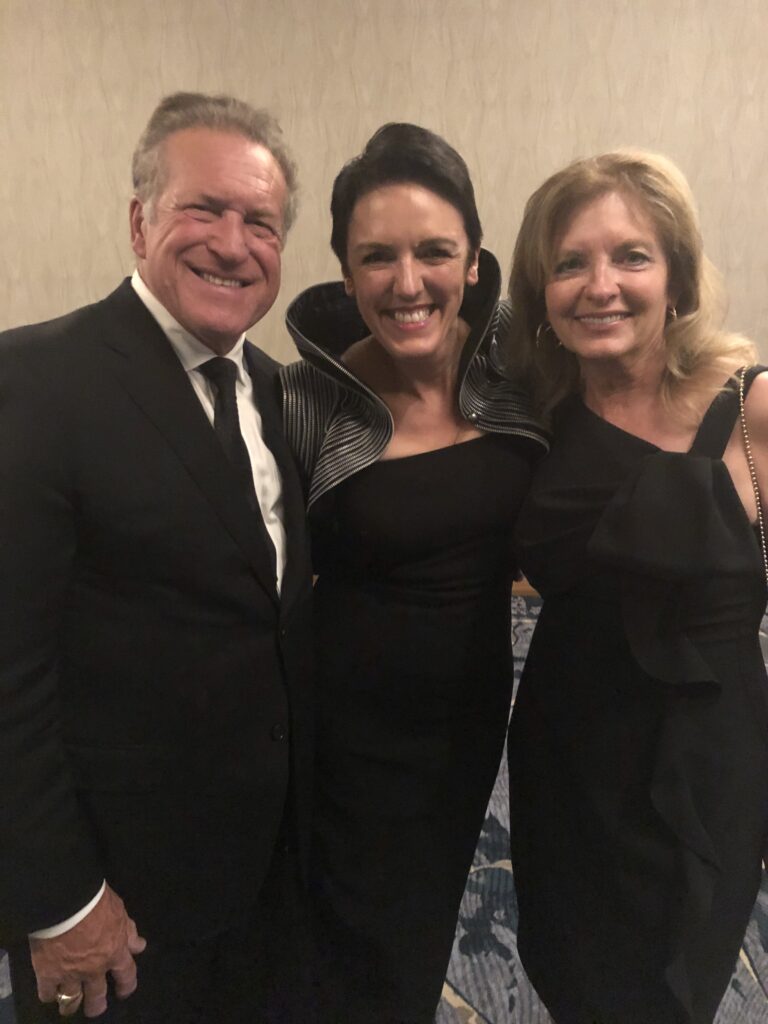
Mark takes feedback seriously. From respected peers, respected clients, or respected mentors, but first and foremost from his wife, Sue. I’ve watched her watch him, during rehearsals, in the audience, on and off the stage, with a level of presence and care that makes you realize feedback isn’t an act of critique, it’s an act of love. She offers guidance that’s both gentle and firm. She is a trusted voice he honors deeply. Their conversations seem private, intentional, and safe, never performative or public. It’s a powerful reminder that the most meaningful feedback happens in spaces where honesty can meet vulnerability, with respect and without judgment.
It taught me to be intentional about who I ask for feedback. Not the crowd. Not everyone with an opinion. But a select few who truly understand my essence, my voice, and my values. Those whom I respect, those whom I trust, and those who care enough to understand that their feedback should first and foremost help me grow, not just criticize me. And in doing so, I’ve learned to receive their insights without defensiveness and to ignore the noise of the unsolicited.
The way Mark gives feedback is equally masterful. He does it with such grace and generosity that I don’t feel corrected, I feel honored. He never tries to change me. He never tries to mold me into a version of himself or anyone else. He helps me become more myself. He steps into my style and then helps me see what I might have missed. He sees my essence and offers insights to sharpen it.
In a group of a thousand speakers, he is my “Sue.” Because I know, he doesn’t just watch from the outside, he listens from the inside. He doesn’t speak to impress, he speaks to elevate. He doesn’t offer feedback to change me, he offers it to help me see what’s already there, waiting to shine. That’s rare. And powerful. And it changed the way I both receive and offer feedback.
The right feedback doesn’t make you someone else. It makes you more of who you already are.
Lesson 8: Ethics Are Non-Negotiable
Mark is respected not just because of what he does on stage, but because of what he refuses to do off it. He’s never involved in drama. Never part of industry gossip. Never chasing the limelight at the cost of integrity. In a world where visibility often outpaces virtue, Mark’s quiet, consistent integrity is a beacon. And it’s taught me that how you do business matters just as much as what you deliver.
He leads with values, privately, consistently, and without compromise. Not with performative statements or public gestures, but with small, on-stage and behind-the-scenes choices that define true character.
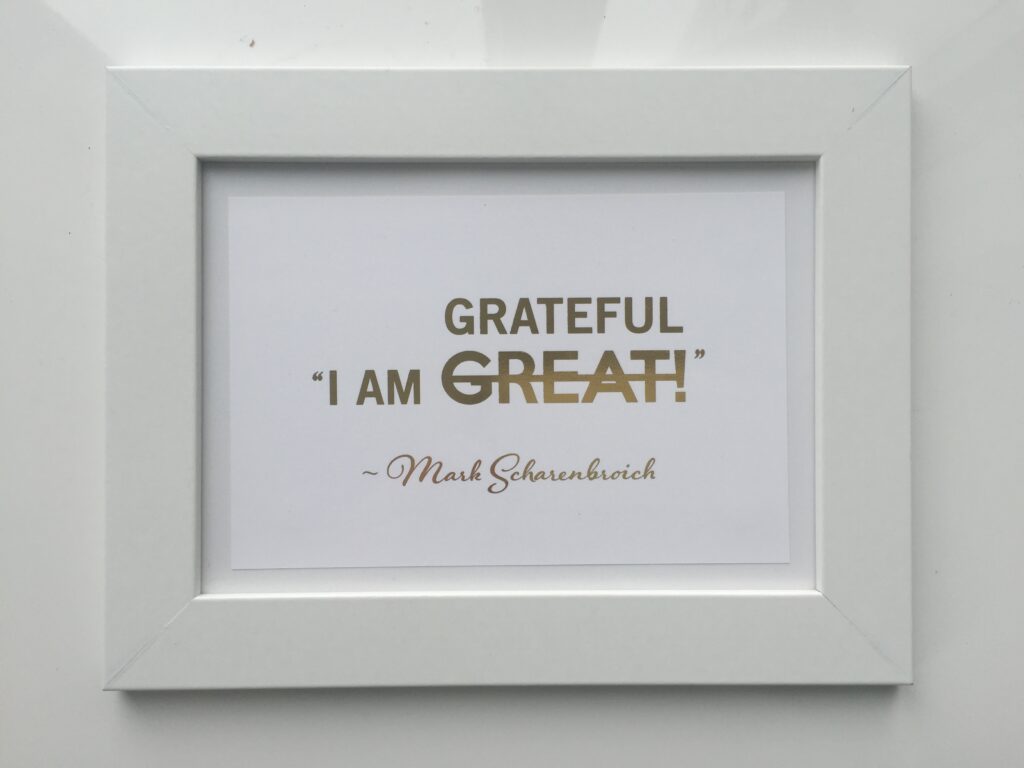
He treats people well, backstage crew, fellow speakers, clients, volunteers. He never just nods or smiles. He engages. He asks names. He offers gratitude. He sees everyone as partners in the experience, and he treats them like the heroes they are.
He honors intellectual property, never using stories, jokes, or insights that aren’t his without attribution. He’s meticulous about crediting those who shaped him, and that models true respect for the creative work of others. He navigates sensitive topics without ever weaponizing the stage. No shaming. No divisive language. Even when addressing tough truths, his approach is rooted in empathy, not ego. He teaches that you can be impactful without being polarizing, and that thoughtfulness is more powerful than provocation. Confidentiality is sacred to him. Conversations with him stay private. If you’re vulnerable with Mark, you never have to worry that it will become anecdote fodder in his next keynote.
I could go on and on, with hundreds of micro moments I have observed Mark showcase that ethics are not just the grand gestures or dramatic declarations. Instead, you demonstrate them consistently in the everyday actions. Ethics are a thousand invisible choices, made when nobody’s clapping and no one’s watching. And that’s what separates good humans from great ones—and great ones from the truly unforgettable.
Your reputation will outlive your keynote. Build it with care. Protect it with principle.
Lesson 9: Legacy Is Built One Keynote at a Time
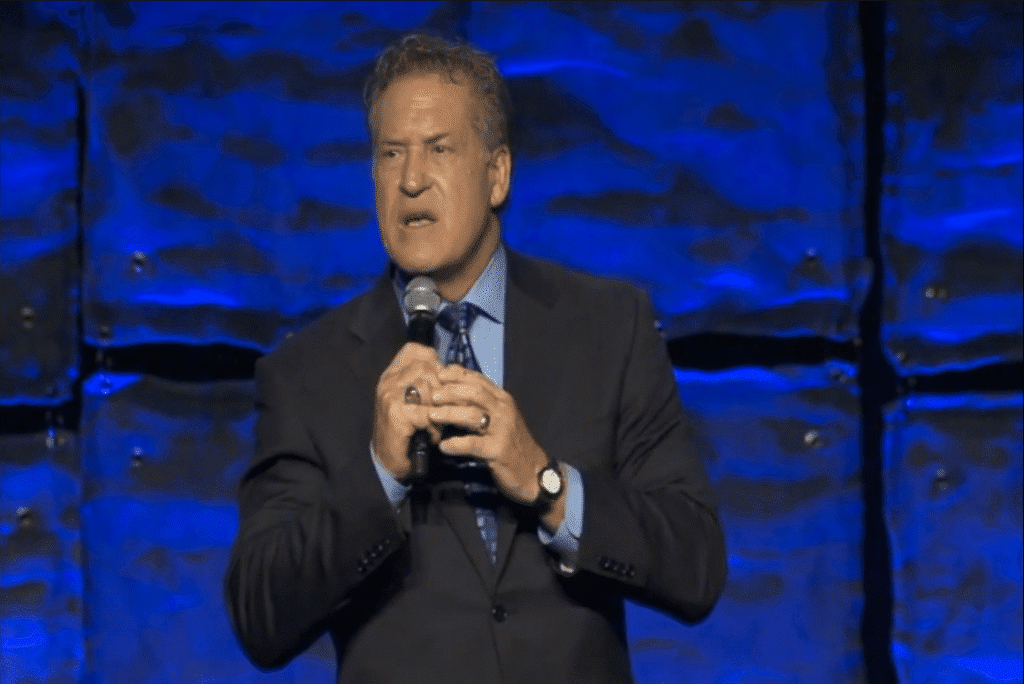
Mark’s impact isn’t defined by one talk. It’s defined by every talk. Every audience. Every moment. He doesn’t rely on a single viral moment or a single event. He shows up every time, like it matters. Because it does.
His legacy isn’t a brand. It’s a body of work. It’s the way people feel after encountering him. Inspired. Seen. Better. Not just once, but again and again, because consistency breeds credibility.
His presence leaves an emotional residue that lingers far longer than the applause, and his influence isn’t rooted in one perfect moment, but in the reliability of his excellence.
The trust that audiences, planners, and peers place in him doesn’t stem from hype, it stems from decades of delivering, growing, evolving, and serving. He doesn’t reinvent himself for applause; he refines himself for impact. Every keynote is crafted with care, not because it’s a performance, but because it’s a promise.
Watching Mark over the years taught me that legacy isn’t something you chase, it’s something you build, keynote by keynote, conversation by conversation, day by day. It’s about showing up when no one is watching, and still choosing to give your best. Because legacy isn’t made of spotlight moments, it’s forged in the dark, with discipline, humility, and the daily decision to be excellent again.
Don’t focus on being remembered. Focus on being revered.
Lesson 10: Family Over Everything
Mark’s identity isn’t wrapped in being the greatest motivational speaker in the world. It’s first and foremost rooted in being a husband. A father. A son. And that grounding shows up everywhere: on stage and off. His family isn’t a footnote to his success. It’s the foundation.
Mark doesn’t just talk about family values, he embodies them. He speaks of his wife and children with such warmth, humor, and reverence that you feel like you know them. And more importantly, you want to know them. The stories he tells, the lessons he shares, the lens through which he sees the world, are all shaped by love, loyalty, and legacy.
It’s not performative. It’s not strategic. It’s deeply human. You feel it in how he prioritizes travel schedules, in the way he carves out time for his family, in the pride that radiates when he introduces his wife from the stage. He models a kind of presence and commitment that says: no stage is more important than the people who will sit at my table when the spotlight fades.
You see it in the moments between moments. When he references his father in a story, you can feel the generations behind his words. When he shares stories about the early years with his wife, which aren’t just sweet memories, but glimpses into a deep partnership that shaped his path. When he lights up talking about his grandchildren as if each one is the world’s greatest gift.
He reminds me that success is measured not just in standing ovations, but in the love you return to when the lights go down. He lives with his priorities in alignment. And that shows up in everything: how he serves, how he leads, how he speaks.
If the foundation at home is fractured, the performance in the spotlight will always wobble.
The Greatest Gift: To Be Seen by the One Who Inspired You
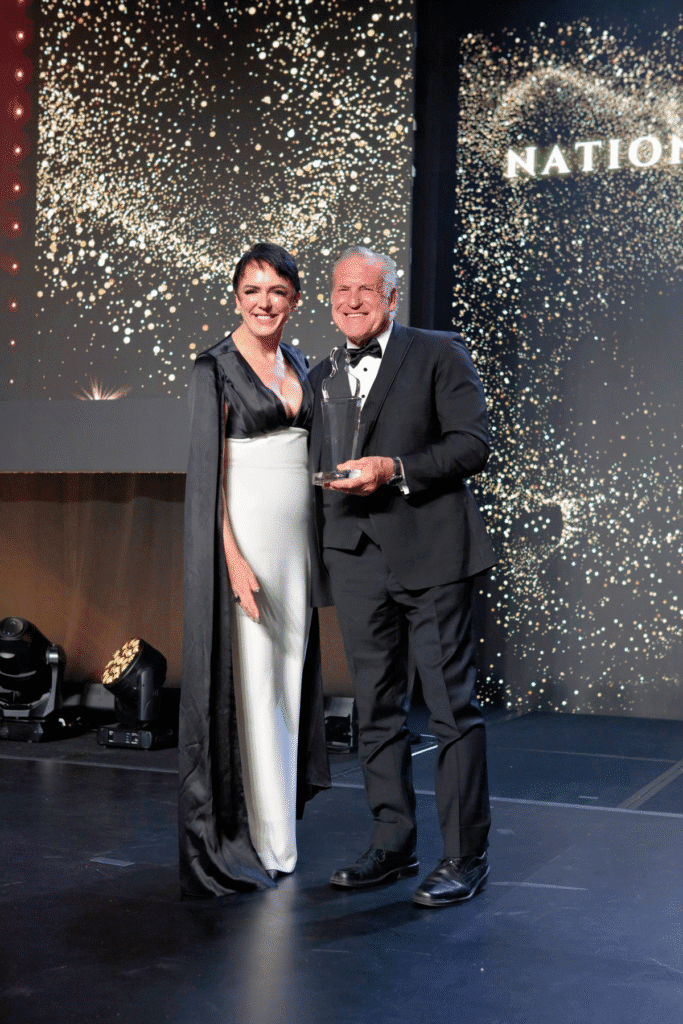
So it will come as no surprise that when I was selected to be inducted into the National Speakers Association Hall of Fame, there was only one person I wanted to share that moment with. My mentor, my role model, my benchmark and standard; not just in this profession, but in the values that hold it up, Mark Scharenbroich, CSP CPAE.
I’ll forever be grateful that he agreed to be the one to introduce me. The one who has shaped my career for more than a decade through every story told, every lesson modeled, every word said, and every gesture made both on and off stage. To have him find words for me, in front of our peers, was the highest honor I could imagine.
Now, it’s my responsibility to live up to those words, to continue the work, and to one day be the kind of speaker and human being he believed me to be in that moment.
